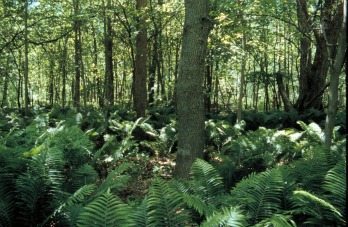Landscape Planning“In
the end, we will conserve only what we love; we will love only
what we understand; and we will understand
only what we are taught." - Baba Dioum, 1968 "Our health depends upon the health of the ecosystem, of which we are a part" - Canadian Association of Physicians for the Environment In southern Ontario, we have eliminated 80% of all woodlands and 72% of all wetlands from our landscape since settlement began. If we care about our health, we need to care about the health of our landscape and natural areas. Over the past 50 years, we have altered and fragmented the natural ecosystems of southern Ontario more rapidly and extensively than in any comparable period in history. Humans and other species need a certain amount of nature on the landscape to access the services ecosystems provide. These natural areas also need to be connected to each other to function properly and to withstand the stresses of climate change and human land use.
Southern Ontario from the Air - Eric Boysen
The "green systems" we depend on for our health and well-being are made up of core conservation lands and waters linked by natural corridors or restored connections. As landscape networks, they are vital for the  conservation of biological diversity, natural
processes and viable populations of native species and ecosystems. conservation of biological diversity, natural
processes and viable populations of native species and ecosystems. A number of local organizations, partners and stakeholders from across southern Ontario are working together regionally to design and plan green systems for their local landscapes. Their efforts to conserve and wisely manage the natural areas on their local landscapes help to maintain a good quality of life for people living in their region. Green Ash floodplain forest, Peterborough County - Wasyl Bakowsky
Methods Application
Green Frog
-
C.D. Jones
|
Resources
- Please visit the CONTACT page
- Visit the Forestry Chronicle website
- Visit the Canadian Journal of Forest Research website
Presentations
- Natural Heritage System (NHS): Science or science fiction? by Puric-Mladenovic D. November 2011. Latornell Conservation Symposium.
Publications
- Designing natural heritage systems in southern Ontario using a systematic conservation planning approach by Puric-Mladenovic D., & Strobl S. November 2012. The Forestry Chronicle. Vol 88(6): 722-735.
- Stakeholder engagement: A foundation for natural heritage systems identification & conservation in Souther Ontario by Spang E., Lemieux C. M., Strobl S. November 2012. The Forestry Chronicle. Vol 88(6):686-696.